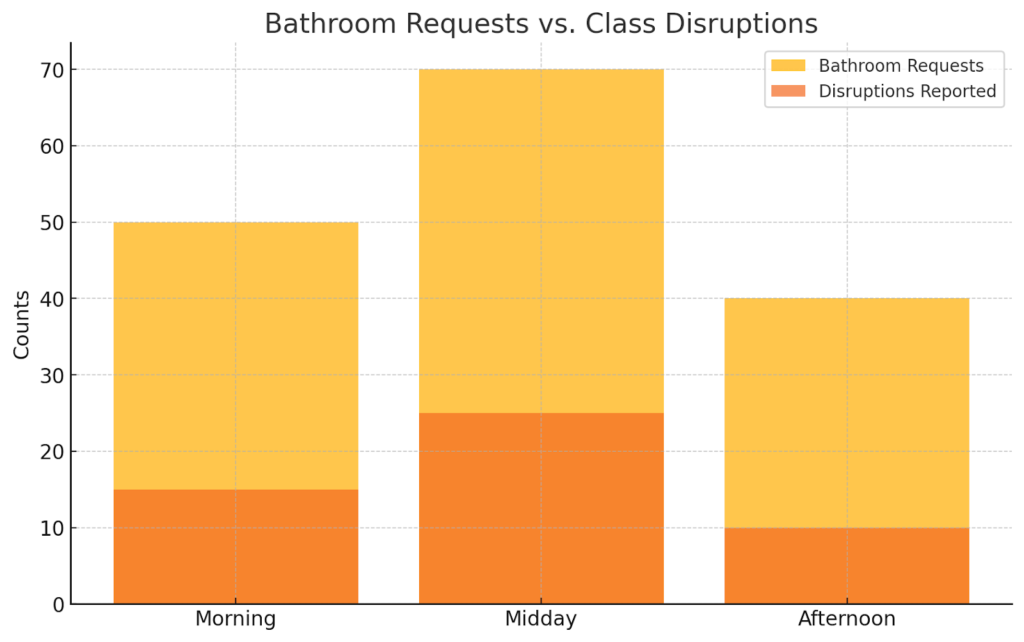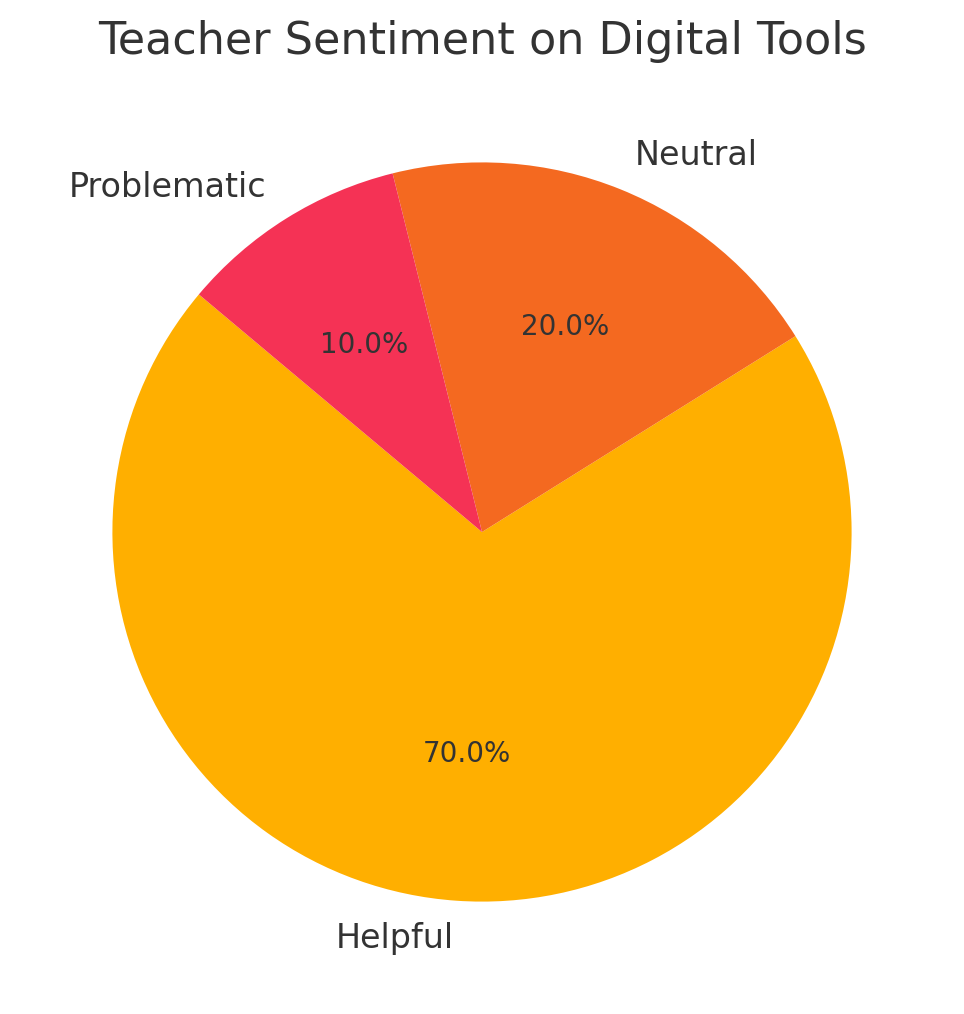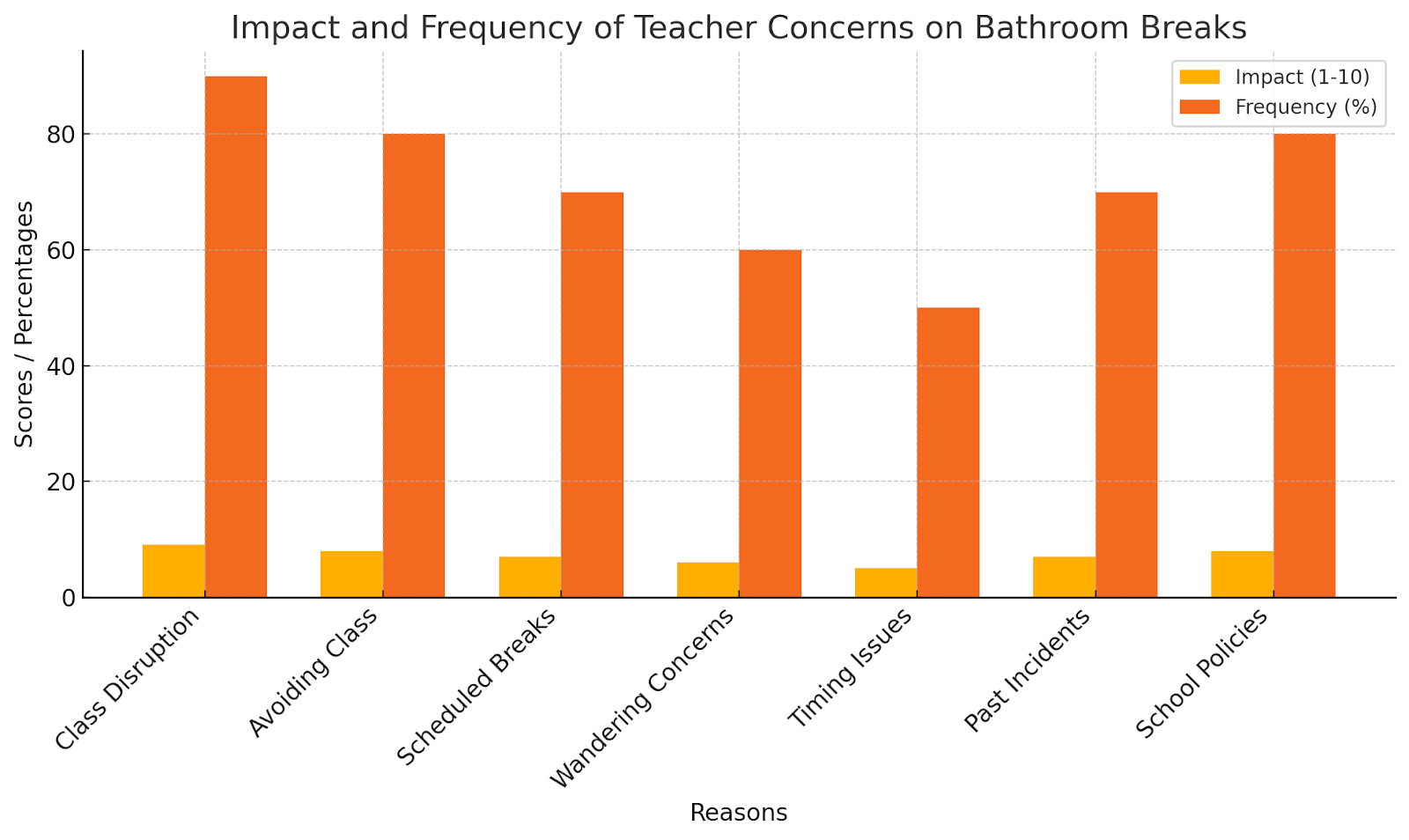It’s a familiar situation. You raise your hand and ask permission to leave, and the teacher says no. Frustrating, right?
But have you ever wondered why this happens? Teachers aren’t trying to be unfair; they often have good reasons.
In this article, we’ll dive into why teachers sometimes deny bathroom breaks, what’s behind these decisions, and what can be done.
Why Teachers Might Not Let Students Go to the Bathroom
Teachers Worry About Class Disruptions

When a student leaves the classroom, it interrupts the flow of learning. Everyone might look up, distracted by the movement. The teacher has to pause for a moment to handle the request. Even that small disruption can throw the lesson off track. Teachers are trying to protect everyone’s learning environment.
If one student leaves, others might feel tempted to do the same. Imagine multiple students requesting breaks in one class. It quickly spirals into chaos.
That’s one big reason teachers hesitate when someone asks to leave during a lesson. A teacher’s goal is to keep everyone focused. Time is limited, and there’s a lot to cover.
Some Students Use Bathroom Breaks to Avoid Class
Let’s be honest! bathroom breaks aren’t always about using the restroom. Some students use them as an escape. Maybe they’re bored. Maybe they didn’t do their homework. Or maybe they just want to chat with friends in the hallway.
Teachers have seen this happen countless times. It’s no surprise they’ve grown cautious. If they allow one unnecessary trip, it could encourage others to do the same. They need to ensure breaks are used for their real purpose.
Why Don’t Students Use Break Times?
This is a question many teachers ask. Schools already provide breaks, like recess, lunch, and passing periods. These moments are the perfect time to use the bathroom. So why do students wait until class starts?
Sometimes, it’s poor time management. Other times, the student might not feel the need during breaks. Teachers often assume students should take responsibility to use the restroom when they have the chance. That’s why they might say no during class.
Teachers Worry About Students Wandering
When a student leaves the room, they’re no longer under the teacher’s supervision. This raises concerns, especially for younger students. Where are they going? Are they safe?
Teachers are responsible for every student during class time. If something happens outside the classroom, the teacher is held accountable. This is a major reason why some schools enforce strict bathroom policies.
For older students, wandering can be another issue. Some might roam the halls or hang out with friends instead of heading straight to the restroom.
If a student leaves and doesn’t return on time, the teacher has to figure out where they went. It’s a big responsibility, especially in larger schools.
Timing Can Be Everything
Certain moments in class are critical. Maybe the teacher is giving instructions for an assignment or explaining a complex topic. If a student leaves during these moments, they might miss key information.
Teachers might ask students to wait for a better time. It’s not about denying their needs. It’s about ensuring they don’t fall behind.
Teachers Remember Past Incidents
Maybe a student pretended to need the bathroom but got caught skipping class. Or maybe there were problems like vandalism or hallway mischief.
These experiences make teachers cautious. They might start enforcing stricter rules to avoid repeating past mistakes. It’s not always fair to students who genuinely need a break, but it’s how teachers try to maintain order.
School Policies Add Pressure
Every school has its own rules about bathroom use. Some schools allow teachers to decide freely. Others enforce strict limits, like requiring hall passes or logging every trip.
These policies are often meant to ensure safety and prevent misuse. However, they can make teachers feel restricted. Even if they want to say yes, school rules might make it harder.
If you’re curious about how far school rules can go, check out this article: Is It Illegal to Say No to a Student to Go to the Bathroom?
A Summary of the Reasons
So, why don’t teachers let you go to the bathroom? It’s not about being unfair. It’s about managing disruptions, maintaining focus, and ensuring safety. Teachers have to balance a lot of responsibilities, and sometimes that means saying no.
But there’s always room for understanding. Talk to your teacher if you’re facing a genuine issue. Respect their rules and show responsibility in how you manage your time. Together, students and teachers can find a way to make the classroom a better place for learning and yes, for necessary breaks too.
One Solution: Schools Can Use Tech Tools

You’re teaching, trying to keep the class on track, and suddenly three hands shoot up asking to leave. It’s a balancing act between maintaining order and ensuring students aren’t holding it in. Let me tell you about two tools that can fix the problems.
SmartPass
SmartPass isn’t just an app; it’s a total game-changer. Over 1,500 schools across the U.S. are using it right now to replace messy paper passes.
With SmartPass, students can tap a button on their phone or a classroom tablet, and the teacher gets a request instantly. With one click, they’re good to go.
Here’s where it gets interesting. SmartPass doesn’t just track who’s leaving—it learns from the data. It logs every trip: who went out, when they left, and how long they were gone. Think of it as a bird’s-eye view of student movements across the school. It even spots patterns. If a student keeps leaving during math class or always takes too long, the system highlights it.
What’s cool is how it keeps hallways under control. Let’s say five kids in one class all want to leave. SmartPass steps in and says, “Sorry, too many people out right now. Wait your turn.” It’s like having a digital hall monitor. And the feedback? Schools using it report a 25% drop in disruptions and tighter control over student behavior.
e-HallPass
Let me introduce you to e-HallPass. Over 3,000 schools worldwide have adopted this system, and it’s making waves. The idea is simple but powerful. When a student leaves for a bathroom break, the system starts a timer. They scan back in when they return, creating a precise record of how long they were out.
Why does this matter? Well, imagine you’re managing a class of 30 students. Without leaving your desk, you know exactly where everyone is and how long they’ve been gone. And if a student is taking way too long, e-HallPass sends you an alert. It’s like having an assistant who’s always watching the clock.
One of the best features is the integration with school safety protocols. For example, during a fire drill, e-HallPass can instantly show who’s out of class and where they might be. Schools also love the data it provides.
A principal can pull up reports and spot trends like whether a certain group is always leaving at the same time or if certain periods have high traffic.
But there are some loopholes,
- Teachers could feel more justified in denying breaks, thinking the system’s data backs their decision, even when context is missing.
- A teacher may default to saying “no” during a system failure, especially if they’re already hesitant to allow frequent interruptions.
- Teachers might feel pressured to follow the system’s limits, even when they know a student’s request is valid. This rigid approach can harm trust between students and teachers.
Can Multiple Students Use One Pass?
In theory, yes, this could happen if:
- A student shares their pass details or device with another.
- Teachers are too busy to check the legitimacy of the user.
- A group coordinates to take turns using one student’s approved pass.
- If no one checks who physically leaves the room, another student could walk out while pretending to use the same pass.
While digital systems log individual requests, they often rely on teachers and administrators to monitor whether the correct student is leaving. If this oversight is missing, it creates a loophole.
The possibility of misuse might make some teachers even stricter. Knowing this loophole exists, they might hesitate to approve passes, especially for students they suspect might misuse them. Even with tools in place, trust remains a critical factor.
Conclusion
Teachers saying no to bathroom breaks isn’t about being unfair. It’s about managing the classroom, keeping students safe, and reducing distractions. But frustration can build when students feel their needs aren’t understood. Technology offers a step forward, but it’s not a fix-all.
SmartPass and E-HallPass can reduce distractions, track usage, and help teachers stay informed. Schools using these tools report fewer disruptions and better accountability.
However, systems are only as effective as the people using them. Loopholes like shared passes or rigid data-driven decisions can make even the best tools fall short.
The way forward is about balance. Schools need to use technology with flexibility, ensuring teachers have the freedom to make thoughtful decisions. Students, in turn, need to approach breaks responsibly. Open conversations, fair policies, and consistent training can build the trust needed to make these systems work.
It’s not just about controlling bathroom breaks. It’s about making classrooms run smoothly and treating everyone fairly. With the right tools and mindset, schools can create better solutions for students and teachers alike.
For more insights on school policies and teacher-student interactions, check out these articles:
Let’s work together to create classrooms that meet everyone’s needs.


